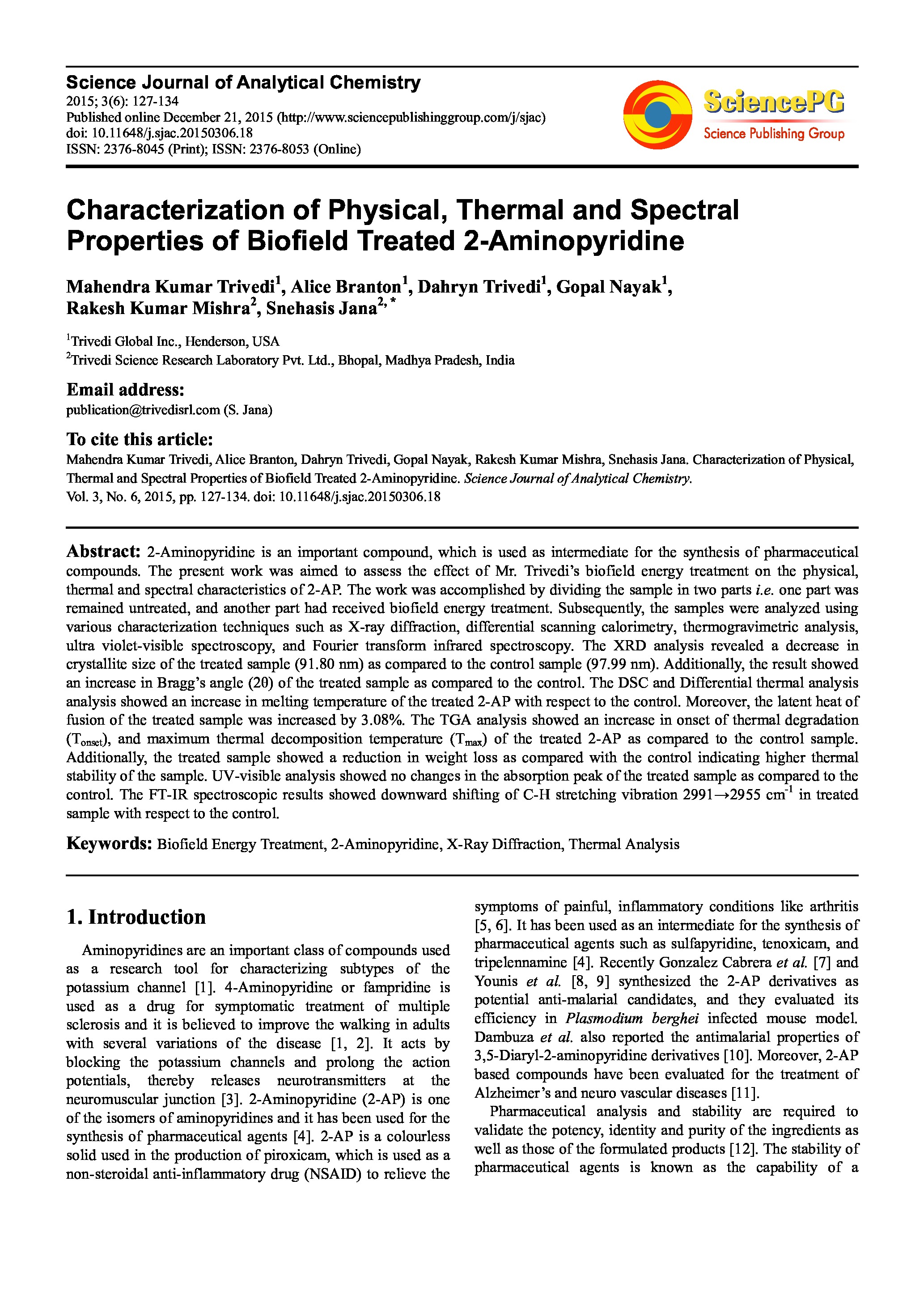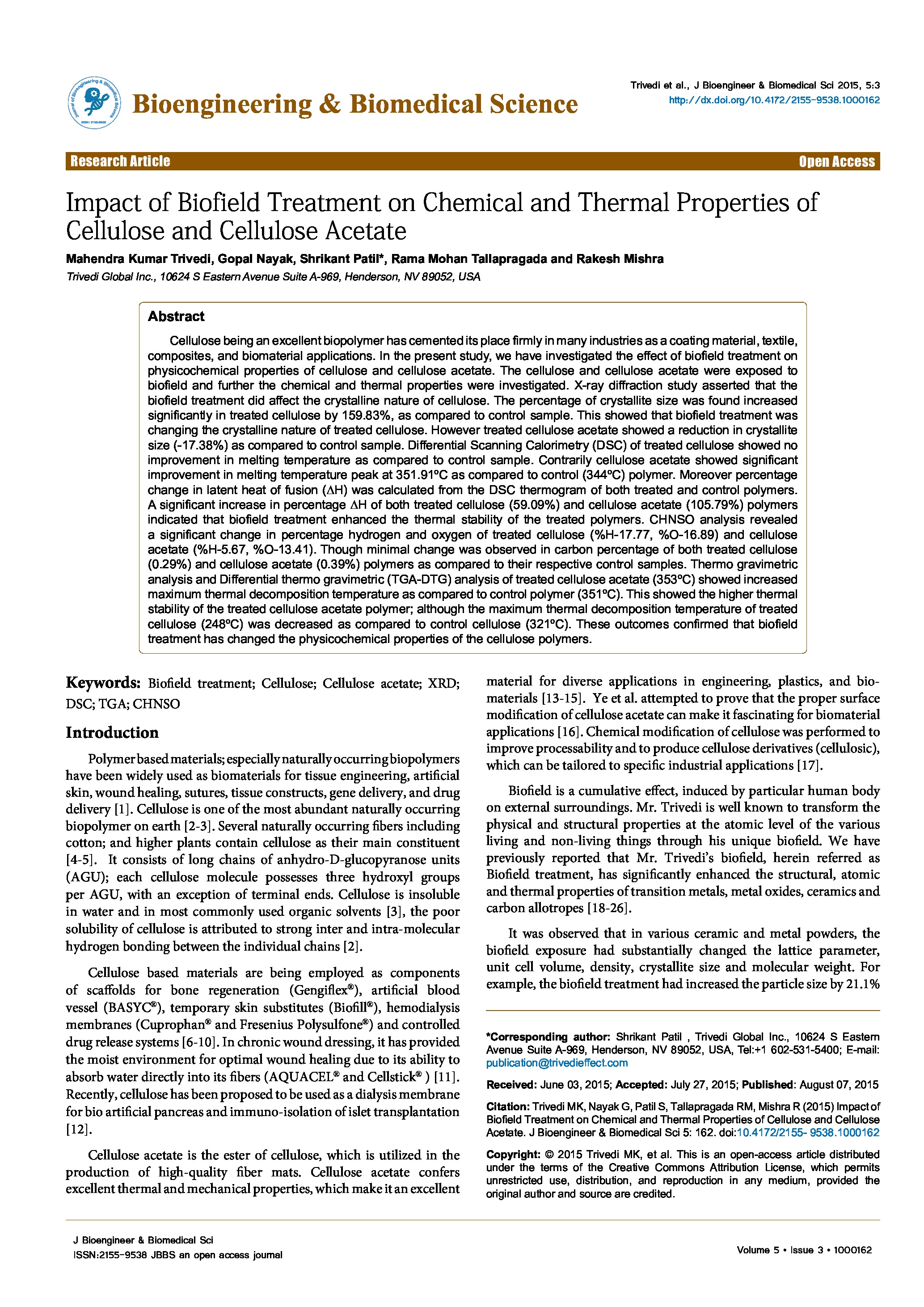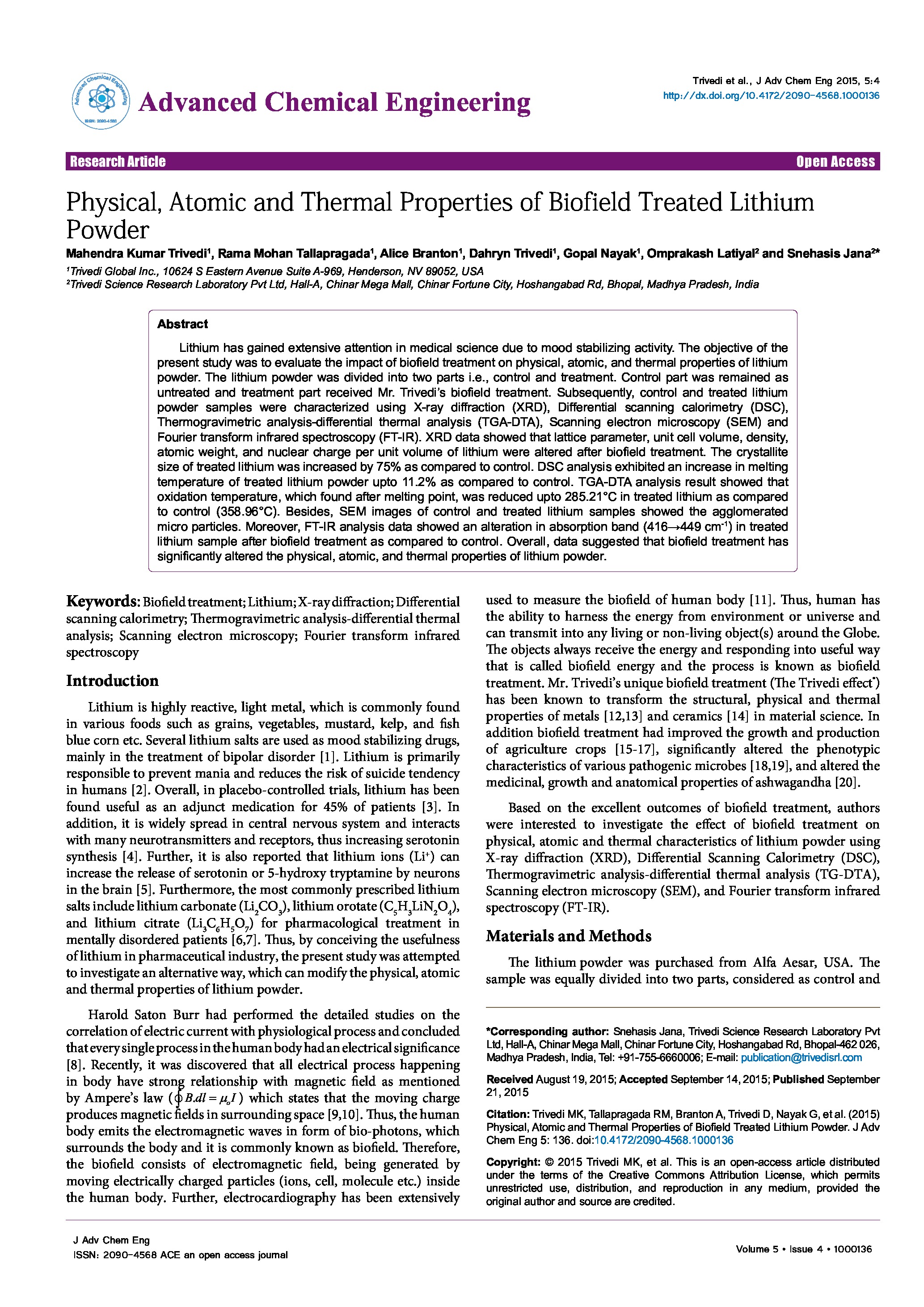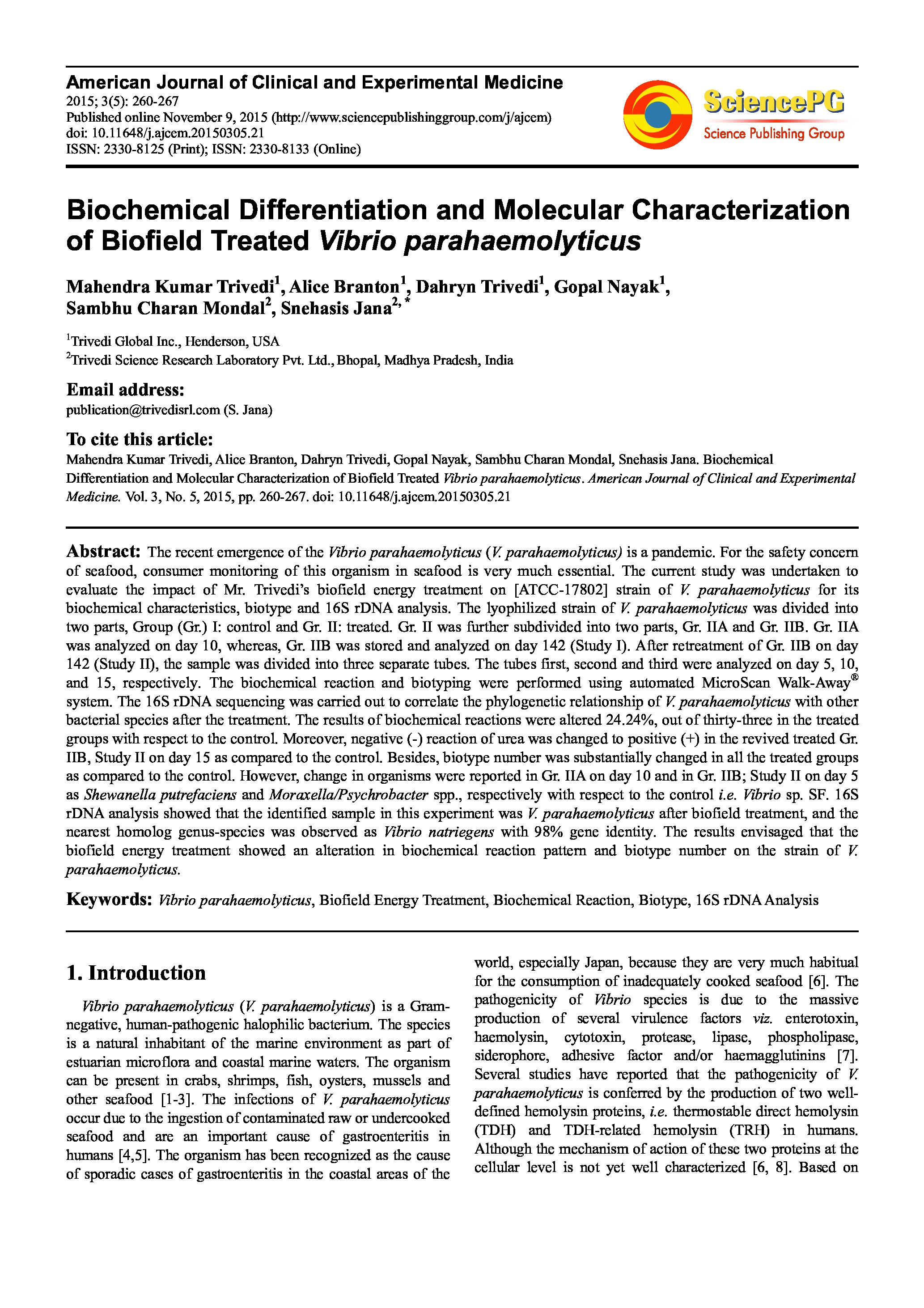Date of upload:
22.12.2016
Co-author:
Mahendra Kumar Trivedi, Rama Mohan Tallapragada, Alice Branton, Dahryn Trivedi, Omprakash Latiyal, Snehasis Jana
Abstract:
Lithium has gained extensive attention in medical science due to mood stabilizing activity. The objective of the present study was to evaluate the impact of biofield treatment on physical, atomic, and thermal properties of lithium powder. The lithium powder was divided into two parts i.e., control and treatment. Control part was remained as untreated and treatment part received Mr. Trivedi’s biofield treatment. Subsequently, control and treated lithium powder samples were characterized using X-ray diffraction (XRD), Differential scanning calorimetry (DSC), Thermogravimetric analysis-differential thermal analysis (TGA-DTA), Scanning electron microscopy (SEM) and Fourier transform infrared spectroscopy (FT-IR). XRD data showed that lattice parameter, unit cell volume, density, atomic weight, and nuclear charge per unit volume of lithium were altered after biofield treatment. The crystallite size of treated lithium was increased by 75% as compared to control. DSC analysis exhibited an increase in melting temperature of treated lithium powder upto 11.2% as compared to control. TGA-DTA analysis result showed that oxidation temperature, which found after melting point, was reduced upto 285.21°C in treated lithium as compared to control (358.96°C). Besides, SEM images of control and treated lithium samples showed the agglomerated micro particles. Moreover, FT-IR analysis data showed an alteration in absorption band (416→449 cm-1) in treated lithium sample after biofield treatment as compared to control. Overall, data suggested that biofield treatment has significantly altered the physical, atomic, and thermal properties of lithium powder.




